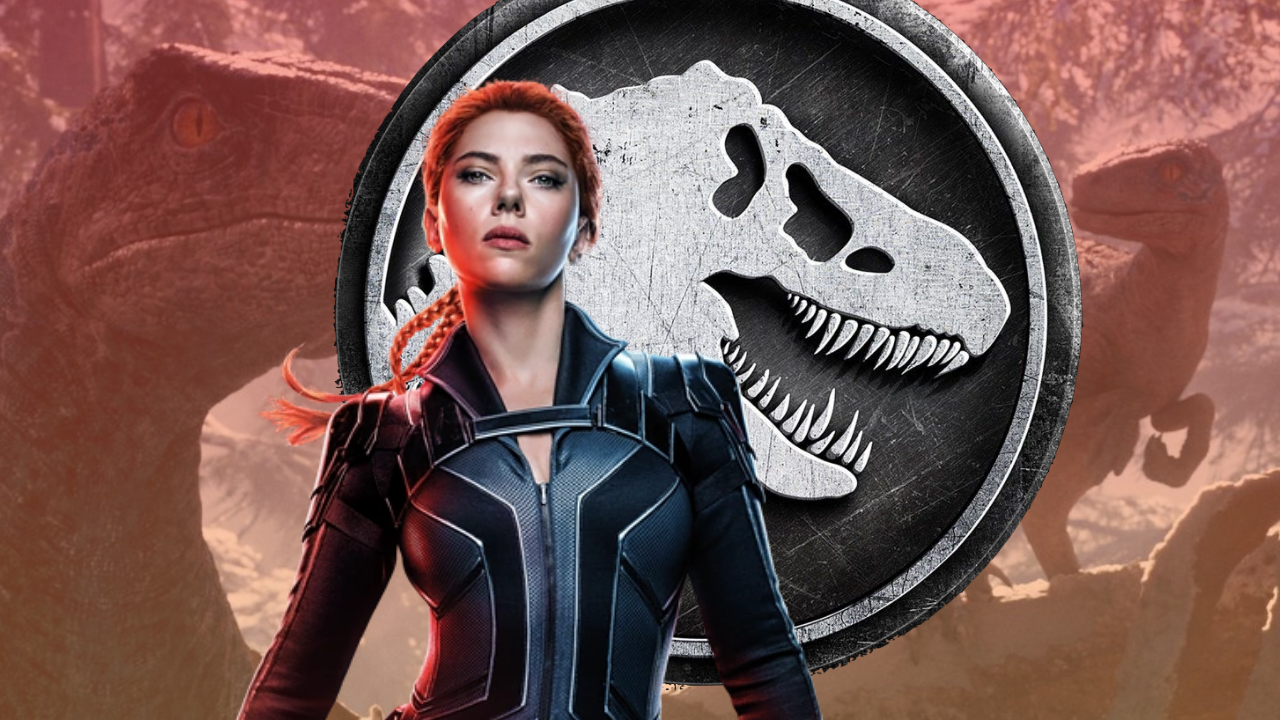Step into the wibbly-wobbly, timey-wimey world of Doctor Who, where the Doctor, an enigmatic Time Lord from Gallifrey, traverses the cosmos in the iconic TARDIS. Across the decades, the Doctor has taken on various faces, personalities, and adventures, leaving an indelible mark on the tapestry of science fiction. In this blog, we embark on a journey through time and space to unravel the bios and explore the diverse incarnations of the Doctor. From the stern wisdom of the First Doctor to the radiant energy of the newest Doctor, each incarnation brings a unique flavor to the character, shaping the legacy of Doctor Who in ways that continue to captivate audiences worldwide. Join us as we delve into the rich history and stories behind every Doctor, celebrating the enduring charm and complexity that defines this iconic time-traveling hero.
First Doctor (William Hartnell):

In the hallowed halls of science fiction, few characters hold the same iconic status as The Doctor from Doctor Who. At the genesis of this extraordinary journey through time and space stands William Hartnell’s First Doctor, a figure whose portrayal not only introduced audiences to the enigmatic Time Lord but also set the stage for a cultural phenomenon that continues to captivate generations. Debuting in 1963, the First Doctor emerged as a beacon of wisdom, wrapped in an aura of paternal authority. Hartnell’s performance unveiled a character with depth, a gruff exterior hiding a caring and protective nature. The Doctor’s relationship with his granddaughter Susan Foreman added a familial touch, and his interactions with companions showcased an insatiable curiosity and an unwavering moral compass, traits that would become the hallmark of the character.
Draped in an Edwardian-style ensemble, complete with a distinctive frock coat and a walking cane, the First Doctor’s visual aesthetic became synonymous with the adventurous spirit of Doctor Who. Each adventure embarked upon – whether facing the menacing Daleks or navigating the intricacies of time travel in the iconic TARDIS – solidified the character’s place in the hearts of fans. The First Doctor’s legacy is not merely the chronological beginning of The Doctor’s journey; it is the foundation upon which the entire narrative arc of Doctor Who was built. William Hartnell’s portrayal remains a testament to the enduring charm and complexity that defines The Doctor, making the First Doctor an indelible part of science fiction history.
Achievements: Introduced the concept of the Doctor as a Time Lord, started the show’s legacy in 1963.
Second Doctor (Patrick Troughton):
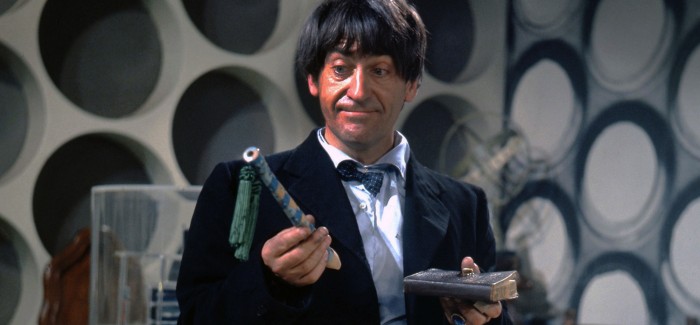
In the ever-expanding universe of Doctor Who, the legacy of the enigmatic Time Lord takes a vibrant turn with Patrick Troughton’s portrayal of the Second Doctor. Following William Hartnell’s groundbreaking introduction, Troughton’s debut in 1966 brought forth a whimsical and eccentric incarnation that not only endeared audiences but also solidified the concept of regeneration. The Second Doctor emerged as a playful and unpredictable figure, a stark departure from his predecessor’s stern demeanor. Troughton’s performance was marked by a mischievous charm, a penchant for disguises, and a mastery of humor that endeared him to fans.
Dressed in a distinctive bowler hat, a recorder in hand, and a checkered suit, the Second Doctor’s appearance reflected a departure from the more formal attire of the First Doctor. This change not only signaled a shift in fashion but also hinted at the dynamic nature of The Doctor through regenerations. The Second Doctor’s adventures were laced with a sense of improvisation and quick thinking, often relying on wit and cunning to navigate through perilous situations. His encounters with iconic foes like the Cybermen and the Yeti added layers to the character’s legacy, showcasing a Doctor who could seamlessly balance levity with moments of genuine gravity.
Patrick Troughton’s contribution to Doctor Who extends beyond his time on screen. By embracing the concept of regeneration, he laid the groundwork for the show’s longevity and the fluidity of The Doctor’s character. The Second Doctor’s era remains a beloved chapter in the show’s history, leaving an indelible mark on the evolving narrative of time-traveling adventures.
Achievements: Faced the first regeneration, solidifying the idea of the Doctor changing appearance.
Third Doctor (Jon Pertwee):
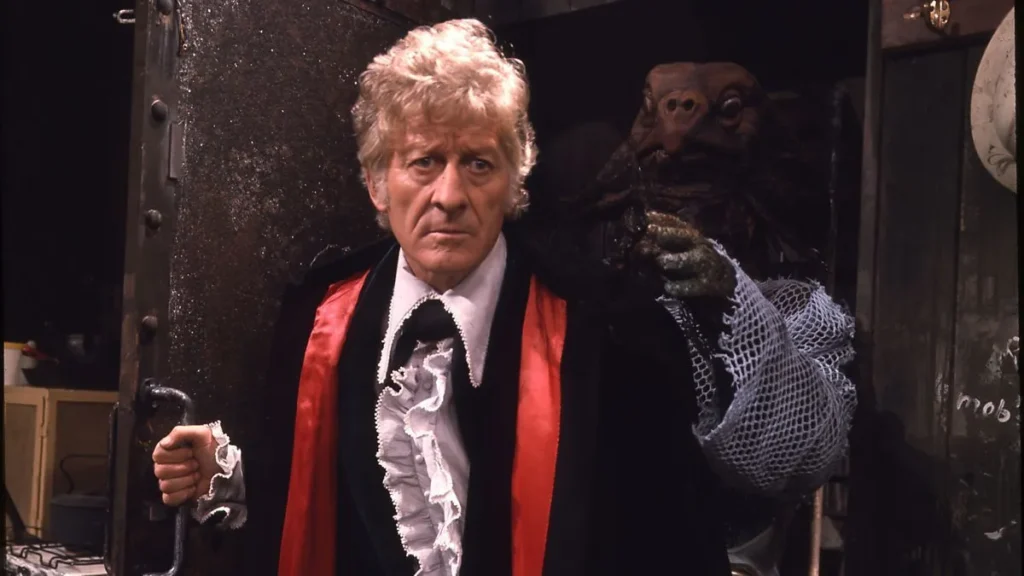
Stepping into the TARDIS in the early 1970s, Jon Pertwee brought a distinct flavor to Doctor Who as the Third Doctor, elevating the character with a blend of action, elegance, and timeless charm. Following Patrick Troughton’s whimsical portrayal, Pertwee’s Doctor made a stylish entrance, draped in velvet and adorned with frills, embodying a sense of suavity and sophistication that resonated with viewers.
The Third Doctor’s era was marked by a unique set of circumstances as he found himself marooned on Earth, working closely with the Unified Intelligence Taskforce (UNIT). This collaboration introduced a more action-oriented Doctor, showcasing Pertwee’s expertise in hand-to-hand combat and his affinity for gadgetry, notably the iconic Bessie – a vintage roadster that became synonymous with the era. Pertwee’s Doctor embraced the challenges of Earth-bound adventures, defending the planet against extraterrestrial threats with a blend of martial arts prowess and scientific acumen.
Notable adversaries during the Third Doctor’s tenure included the Autons, Silurians, and the Master, played by Roger Delgado. These encounters not only heightened the stakes but also showcased the Doctor’s ability to adapt and face challenges head-on. Jon Pertwee’s portrayal marked a renaissance for Doctor Who, infusing the character with an elegance and action-packed vibrancy that left an enduring impact on the show’s narrative trajectory. The Third Doctor’s legacy is not only one of style and action but also a testament to the character’s ability to evolve and thrive in the face of new challenges.
Achievements: Stranded on Earth, worked with UNIT, and introduced more action to the show.
Fourth Doctor (Tom Baker):
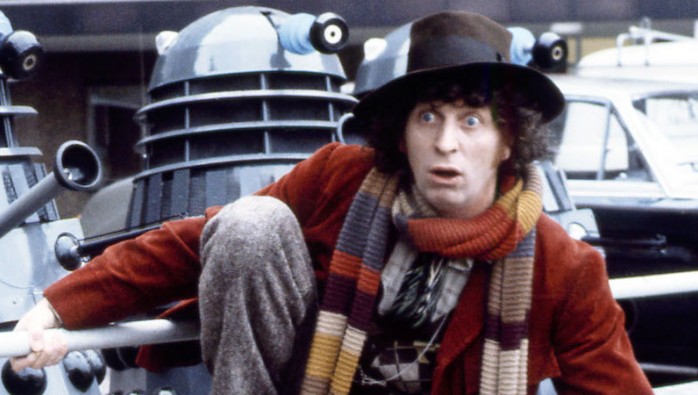
In the annals of Doctor Who history, the indomitable Tom Baker left an indelible mark as the Fourth Doctor, a portrayal that transcended time and space, defining an era that endures as one of the show’s most beloved chapters. Taking the reins from Jon Pertwee in 1974, Baker brought a kaleidoscope of eccentricity, humor, and unparalleled charisma to the iconic role.
Draped in an impossibly long, multi-colored scarf and crowned with a distinctive curly mop of hair, the Fourth Doctor’s visual eccentricity became symbolic of the character’s larger-than-life personality. Baker’s portrayal blended a quirky sense of humor with an undercurrent of darkness, creating a Doctor who could seamlessly shift from comedic banter to moments of profound seriousness. His affinity for jelly babies and the catchphrase “Would you like a jelly baby?” became iconic elements that endeared him to fans.
The Fourth Doctor’s tenure was marked by an array of memorable companions, including Sarah Jane Smith and K-9, as well as some of the most enduring adversaries, such as the Daleks and the enigmatic Time Lord known as the Master. Notable story arcs like “Genesis of the Daleks” and “The Deadly Assassin” explored moral dilemmas and the darker aspects of the Doctor’s character.
Tom Baker’s Fourth Doctor remains the longest-serving incarnation, spanning seven seasons until 1981. His legacy extends beyond the screen, leaving an indelible imprint on Doctor Who fandom and popular culture. The Fourth Doctor’s era is celebrated for its narrative richness, whimsical charm, and Tom Baker’s irreplaceable contribution to the enduring magic of The Doctor’s adventures.
Achievements: Longest-serving Doctor, iconic scarf, and jelly babies. Balanced humor with darker themes.
Fifth Doctor (Peter Davison):
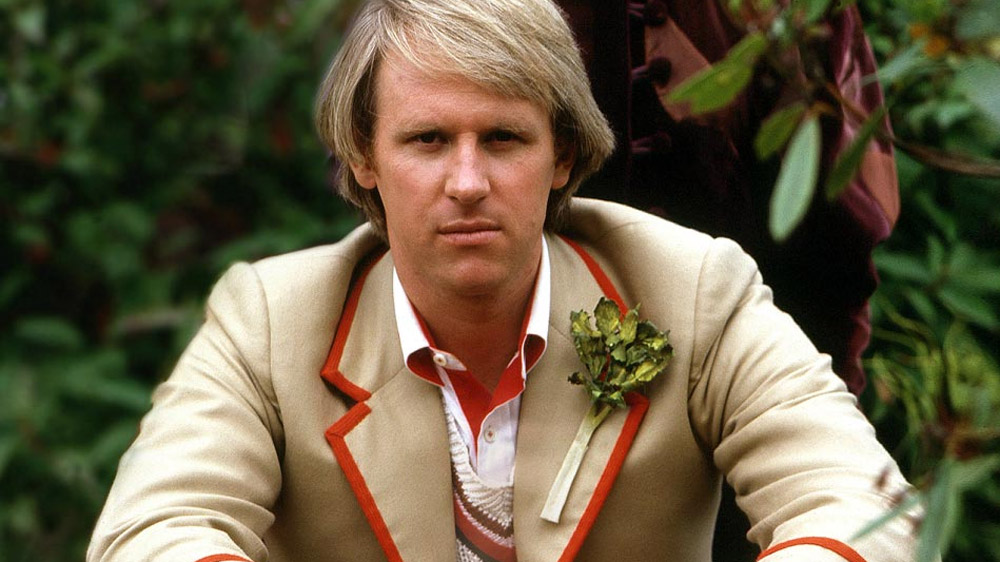
As the TARDIS continued its journey through time and space, Peter Davison assumed the mantle of the Fifth Doctor, bringing a breath of fresh air to Doctor Who in the early 1980s. Davison’s portrayal introduced a Doctor characterized by gentle grace, compassion, and a profound moral compass that navigated the complexities of the cosmos.
Dressed in a distinctive cricket outfit, complete with a celery stalk pinned to his lapel, the Fifth Doctor’s appearance conveyed a sense of understated elegance. This sartorial choice, combined with Davison’s youthful energy, marked a departure from the eccentricity of his predecessor and solidified the character’s identity as a more approachable and relatable Time Lord.
The Fifth Doctor’s era was defined by a series of companions, including Adric, Nyssa, and Tegan Jovanka, each contributing to the dynamic of the TARDIS crew. Davison’s Doctor faced moral dilemmas and emotional challenges, and his vulnerability became a central theme of his tenure. The story arc “The Caves of Androzani” is often hailed as a pinnacle moment, showcasing the Doctor’s selflessness and willingness to sacrifice for others.
Despite facing formidable foes such as the Cybermen and the Mara, the Fifth Doctor’s approach was marked by a commitment to non-violence and diplomacy. Davison’s departure in 1984 concluded an era that emphasized the importance of empathy and collaboration in the face of adversity. The legacy of Peter Davison’s Fifth Doctor lies in the character’s capacity for kindness and the exploration of the emotional depth that continues to resonate with fans of Doctor Who to this day.
Achievements: Faced moral dilemmas, introduced vulnerability, and dealt with significant losses.
Sixth Doctor (Colin Baker):
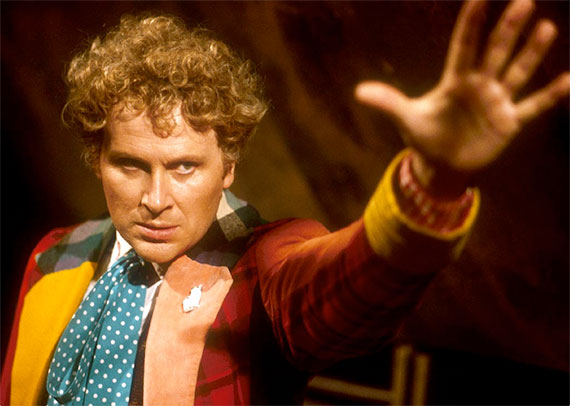
As the TARDIS underwent its next regeneration, Colin Baker stepped into the iconic role, bringing forth a portrayal of the Sixth Doctor that would prove to be as flamboyant as it was enigmatic. Debuting in the mid-1980s, Baker’s Doctor was a departure from the gentleness of his predecessor, exuding an unapologetic confidence and a flair for the dramatic.
The Sixth Doctor’s wardrobe alone became a symbol of his extravagant personality, featuring a vibrant ensemble with a multicolored coat that boldly declared his penchant for the theatrical. Yet, beneath this exterior, Baker’s Doctor was a complex figure, characterized by moments of arrogance and a sharp tongue, challenging the traditional expectations of the Time Lord.
Despite facing criticism for his abrasive demeanor, the Sixth Doctor’s era presented intriguing storylines that delved into darker themes. The trial arc, encompassing “The Mysterious Planet,” “Mindwarp,” “Terror of the Vervoids,” and “The Ultimate Foe,” explored the Doctor’s moral choices and consequences, showcasing a narrative depth that added layers to the character.
The Sixth Doctor’s companions, including Peri Brown and Mel Bush, navigated the Time Lord’s turbulent personality, contributing to the complex dynamic within the TARDIS. While Baker’s tenure was relatively short-lived, concluding in 1986, his portrayal of the Doctor remains a fascinating and polarizing chapter in Doctor Who history. Colin Baker’s Sixth Doctor, with his flamboyant charm and multifaceted personality, stands as a testament to the show’s ability to evolve and experiment with the character at its core.
Achievements: Confronted darker themes, regeneration trauma, and complex story arcs.
Seventh Doctor (Sylvester McCoy):
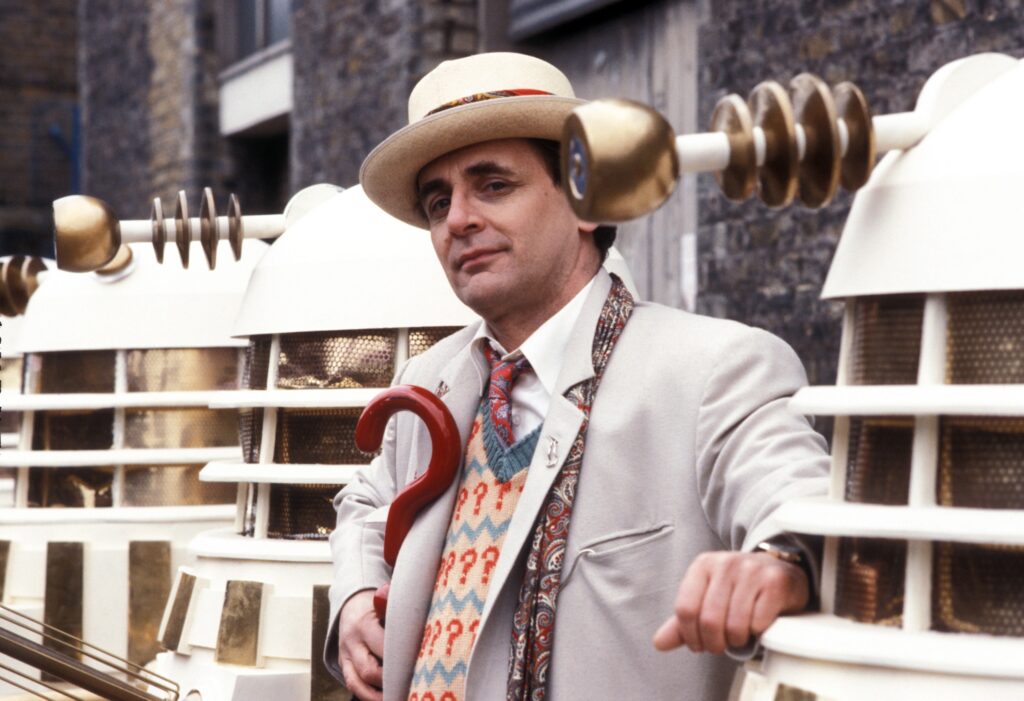
In the late 1980s, Sylvester McCoy assumed the role of the Seventh Doctor, steering Doctor Who into a new era marked by enigma, complexity, and a dark undertone. McCoy’s portrayal brought a sense of mystery and manipulation to the character, crafting a Doctor who played chess games across time and space.
Clad in a hat and dressed in a layered, professorial fashion, the Seventh Doctor’s appearance exuded an air of eccentricity with a touch of mystery. McCoy’s Doctor was a master of manipulation, often operating behind the scenes to orchestrate events for a greater purpose. The character’s complexity was further revealed through a unique blend of wit, charm, and an underlying darkness that hinted at the Time Lord’s intricate machinations.
The Seventh Doctor’s era explored intricate story arcs, notably the “Cartmel Masterplan,” which aimed to reintroduce a sense of mystery to the Doctor’s origin. Episodes like “Remembrance of the Daleks” and “The Curse of Fenric” revealed a Doctor capable of outwitting enemies through strategic planning and psychological insight.
Companions such as Ace, an energetic and rebellious teenager, added depth to the Doctor’s character dynamics. The Seventh Doctor’s departure in 1989 marked the end of the classic era of Doctor Who, leaving fans with a Doctor whose legacy extended beyond the screen.
Sylvester McCoy’s Seventh Doctor, with his shadows and chess games, remains a complex and intriguing chapter in the show’s history. The character’s enigmatic nature and McCoy’s nuanced performance contributed to the evolving narrative of Doctor Who, setting the stage for the show’s eventual revival in the 21st century.
Achievements: Involved in complex, layered story arcs, brought a darker tone to the character.
Eighth Doctor (Paul McGann):
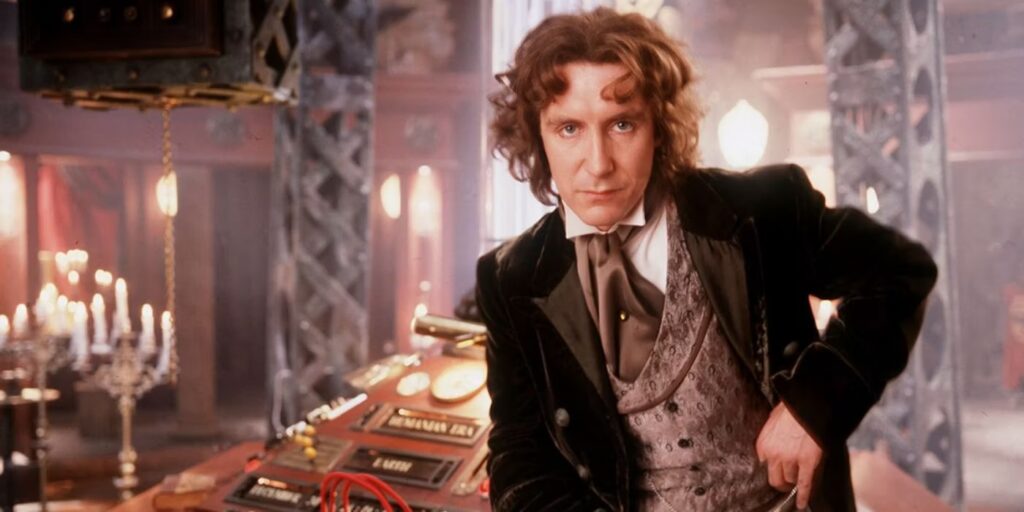
Amidst the winds of change heralding the 1996 television movie, Paul McGann stepped into the TARDIS as the Eighth Doctor, bringing forth a portrayal that added a touch of romance and sensitivity to the iconic character. This era, albeit brief, holds a unique place in Doctor Who history, offering fans a glimpse into the Doctor’s romantic soul.
McGann’s Doctor emerged with a sense of elegance and charm, clad in a Victorian-inspired ensemble that reflected the character’s timeless and romantic essence. The Eighth Doctor’s soft-spoken demeanor and expressive eyes conveyed a sensitivity rarely explored in previous incarnations, setting the tone for a Doctor deeply connected to the emotional tapestry of the universe.
The television movie explored the Doctor’s regeneration, his amnesia, and a burgeoning romantic subplot with companion Grace Holloway. McGann’s performance added layers to the Doctor’s persona, as he grappled with the complexities of love, loss, and rediscovery. Despite the movie not leading to a full series, McGann’s portrayal resonated with fans, cultivating a fervent following that celebrated the Eighth Doctor’s emotional depth.
The Eighth Doctor’s legacy extended beyond the screen through expanded universe media, including audio dramas and novels. McGann’s Doctor became a symbol of the unexplored realms of the Time Lord’s psyche, emphasizing the emotional journey that defines Doctor Who as a show that transcends time and genre. Paul McGann’s Eighth Doctor, with his romantic odyssey, remains a cherished chapter in the ever-expanding narrative of the Doctor’s adventures.
Achievements: Starred in the 1996 TV movie, exploring a more emotional side of the character.
War Doctor (John Hurt):
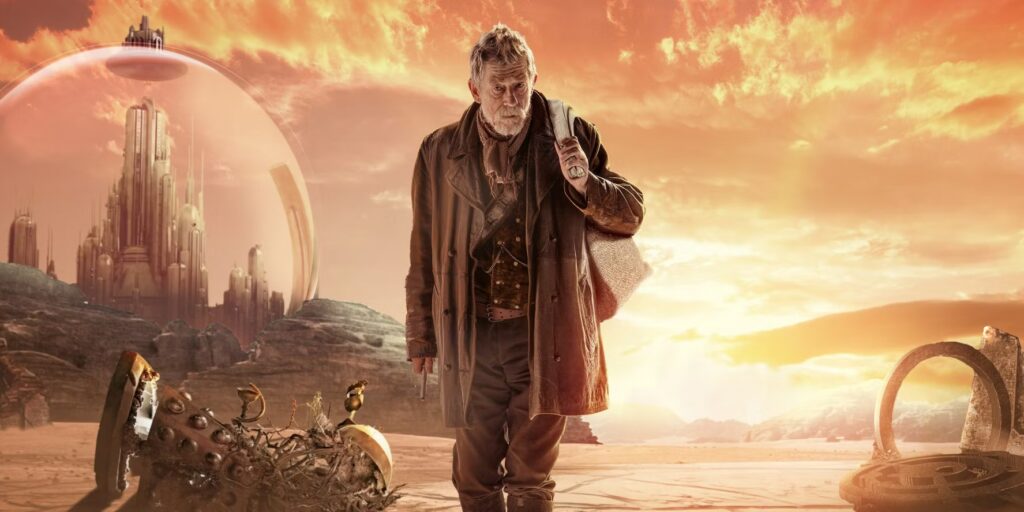
In the turbulent waters of the Time War, John Hurt emerged as the War Doctor, a previously undisclosed incarnation whose existence was unveiled in the 50th-anniversary special of Doctor Who. The War Doctor, often simply referred to as “The Warrior,” brought a gravitas and somberness to the character, embodying the moral dilemmas and sacrifices of the Time War.
Clad in battle-worn attire and exuding a weariness reflective of the atrocities witnessed, John Hurt’s portrayal introduced viewers to a Doctor who had forsaken the title in pursuit of ending the Time War. The War Doctor grappled with the moral complexities of using the “Moment” to annihilate both Time Lords and Daleks, a decision that haunted subsequent incarnations.
The character’s appearance in “The Day of the Doctor” not only bridged the classic and modern eras of the show but also provided a crucial narrative link, explaining the Doctor’s hidden history. Hurt’s performance offered a glimpse into the untold struggles of a Doctor who bore witness to the darkest corners of the Time War, showcasing a portrayal that seamlessly blended strength with vulnerability.
The War Doctor, despite his brief on-screen presence, left an indelible mark on Doctor Who, contributing to the rich lore and adding a layer of complexity to the Doctor’s journey. John Hurt’s portrayal remains a poignant exploration of the toll of war on a character who, despite being called the Doctor, had to become something else entirely to face the challenges of the Time War.
Achievements: Stopping the Time War, both the original and new timeline ways.
Ninth Doctor (Christopher Eccleston):
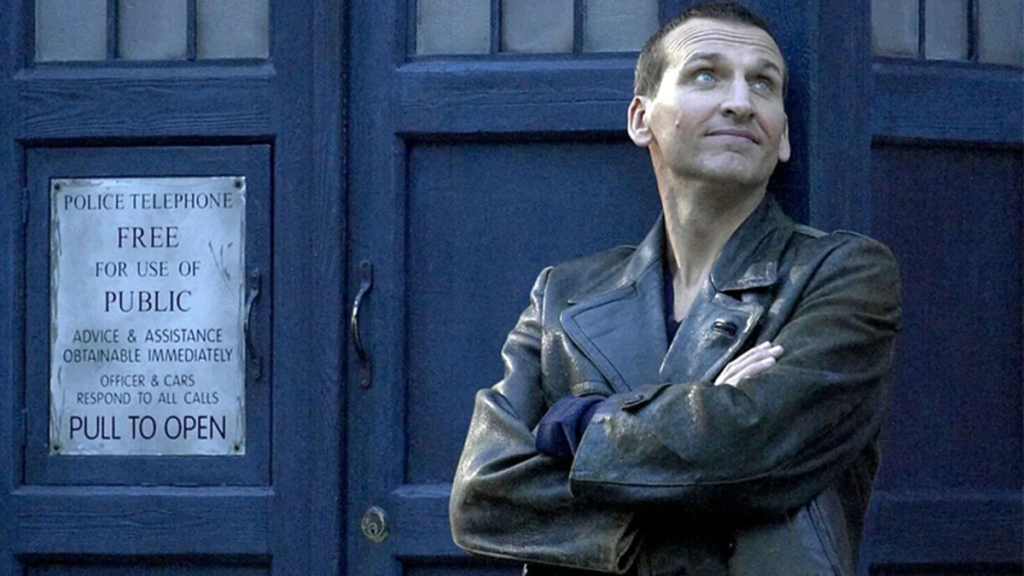
As the TARDIS roared back to life in 2005, Christopher Eccleston emerged as the Ninth Doctor, breathing new vitality into Doctor Who after a lengthy hiatus. Eccleston’s Doctor, characterized by a raw intensity and haunted demeanor, not only reinvigorated the series but also laid the foundation for its modern incarnation.
Dressed in a sleek, black leather jacket and exuding a no-nonsense attitude, Eccleston’s Doctor was a departure from the more whimsical portrayals of the past. His stern exterior concealed a deep trauma stemming from the Time War, an event that reshaped the character’s outlook and added layers of emotional complexity. Eccleston’s performance showcased a Doctor on a path of redemption, grappling with survivor’s guilt and a burning desire to make amends.
The Ninth Doctor’s adventures, often accompanied by Rose Tyler (played by Billie Piper), delved into a mix of historical settings and futuristic landscapes. Notable episodes such as “Dalek” and “The Empty Child/The Doctor Dances” solidified Eccleston’s Doctor as a force to be reckoned with, blending moments of intense drama with touches of humor and compassion.
Eccleston’s tenure, though brief, was a critical turning point for Doctor Who, reintroducing the Time Lord to a new generation of viewers and setting the stage for the show’s resounding success in the 21st century. The Ninth Doctor’s journey of healing and redemption resonated with fans, leaving an enduring impact on the character’s evolution and the show’s legacy as a whole.
Achievements: Rebooted the series in 2005, bringing a darker and damaged portrayal of the Doctor.
Tenth Doctor (David Tennant):
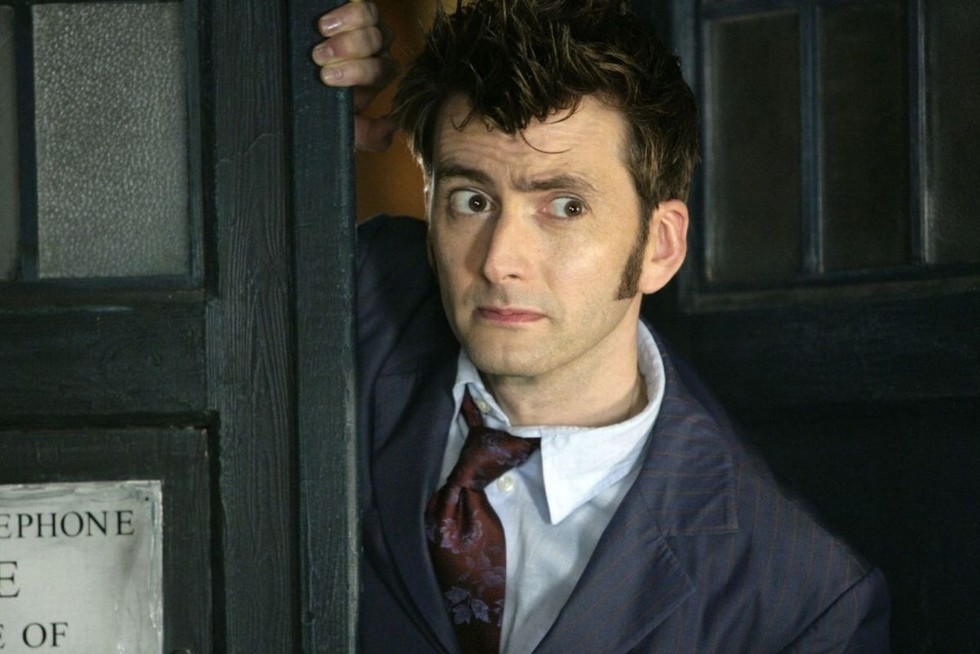
In 2005, a charismatic whirlwind entered the TARDIS, and David Tennant’s portrayal of the Tenth Doctor electrified screens, captivating audiences with a blend of charm, humor, and emotional depth. Tennant’s Doctor became an iconic figure, leaving an indelible mark on the modern era of Doctor Who.
Dressed in a sharp pinstripe suit and armed with a pair of expressive brown eyes, Tennant’s Doctor exuded a youthful energy and an undeniable charisma. The Tenth Doctor’s catchphrases like “Allons-y!” and his signature 3D glasses endeared him to fans, while his witticisms and rapid-fire dialogue showcased a Time Lord brimming with enthusiasm for life and adventure.
Tennant’s Doctor navigated a wide range of emotions, from moments of unbridled joy to heartbreaking farewells. Notable episodes such as “The Girl in the Fireplace,” “Blink,” and “The End of Time” demonstrated Tennant’s ability to convey both the whimsy and the gravitas that defined the character.
The Tenth Doctor’s companions, including Rose Tyler, Martha Jones, and Donna Noble, added depth to the character’s journey. Tennant’s chemistry with his co-stars, particularly Billie Piper, elevated the emotional resonance of the series, creating moments that lingered in the hearts of viewers.
As the Tenth Doctor bid a poignant farewell in 2010, Tennant left an enduring legacy, contributing to the show’s unprecedented popularity and cementing his place as one of the most beloved incarnations of the Doctor. David Tennant’s tenure as the Tenth Doctor remains a masterclass in capturing the essence of an iconic character while infusing it with his own timeless charisma.
Achievements: Popularized the character, brought emotional depth, and faced heartbreaking farewells.
Eleventh Doctor (Matt Smith):
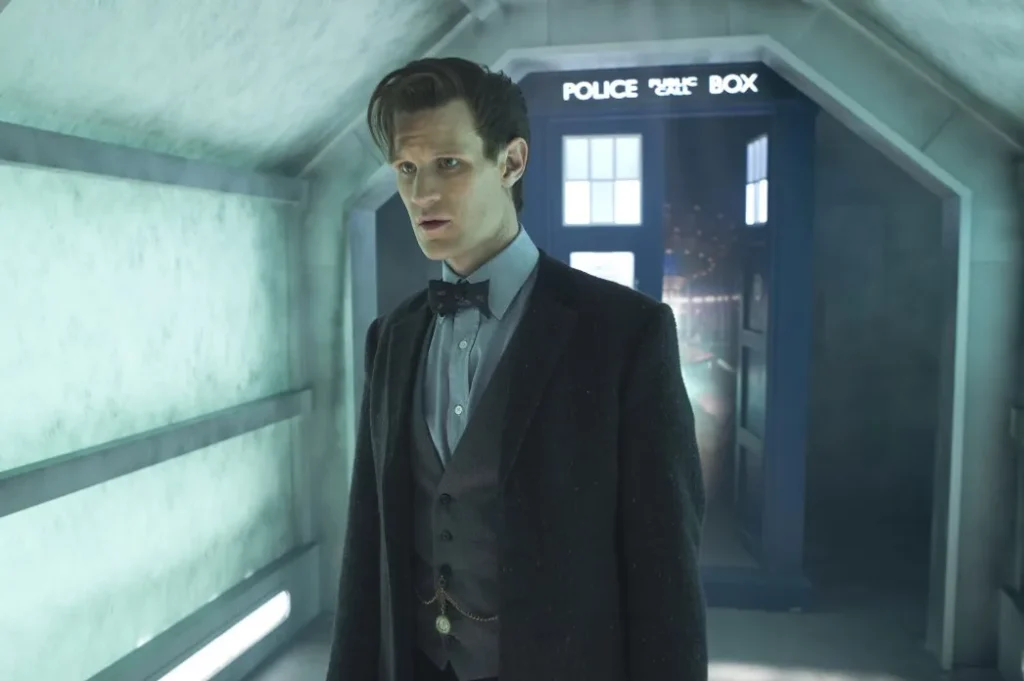
In 2010, the TARDIS witnessed a regeneration, and Matt Smith burst onto the scene as the Eleventh Doctor, bringing a fresh wave of eccentricity, whimsy, and bow ties to Doctor Who. Smith’s portrayal revitalized the character, marking a new era defined by madcap energy and a youthful exuberance.
Draped in tweed jackets, paired with a signature bow tie and adorned with a fez, Smith’s Doctor became an embodiment of quirky charm. His animated expressions, coupled with a boundless enthusiasm for adventure, redefined the Time Lord for a generation of viewers. The Eleventh Doctor’s catchphrase, “Geronimo!” echoed through time and space, becoming a rallying cry for the show’s revitalized spirit.
Smith’s Doctor navigated a myriad of adventures, from battling Weeping Angels in “The Time of Angels/Flesh and Stone” to unraveling the mysteries of River Song’s timeline. The Eleventh Doctor’s companions, including Amy Pond and Rory Williams, contributed to a narrative tapestry rich in emotion and complexity.
The Eleventh Doctor’s era was marked by intricate storytelling, intricate plot arcs, and a fairy-tale-like quality, exemplified in episodes such as “The Eleventh Hour” and “The Day of the Doctor.” Smith’s ability to effortlessly switch between moments of zany comedy and poignant drama solidified his place in the pantheon of iconic Doctor portrayals.
As Matt Smith bid farewell to the TARDIS in 2013, he left an indelible legacy, having reinvigorated Doctor Who and added a chapter of boundless eccentricity to the character’s storied history. The Eleventh Doctor remains a beloved figure, and Matt Smith’s contribution echoes through time as a testament to the enduring appeal of the Doctor’s ever-evolving persona.
Achievements: Balanced whimsy with gravity, explored complex story arcs, and introduced a new era.
Twelfth Doctor (Peter Capaldi):
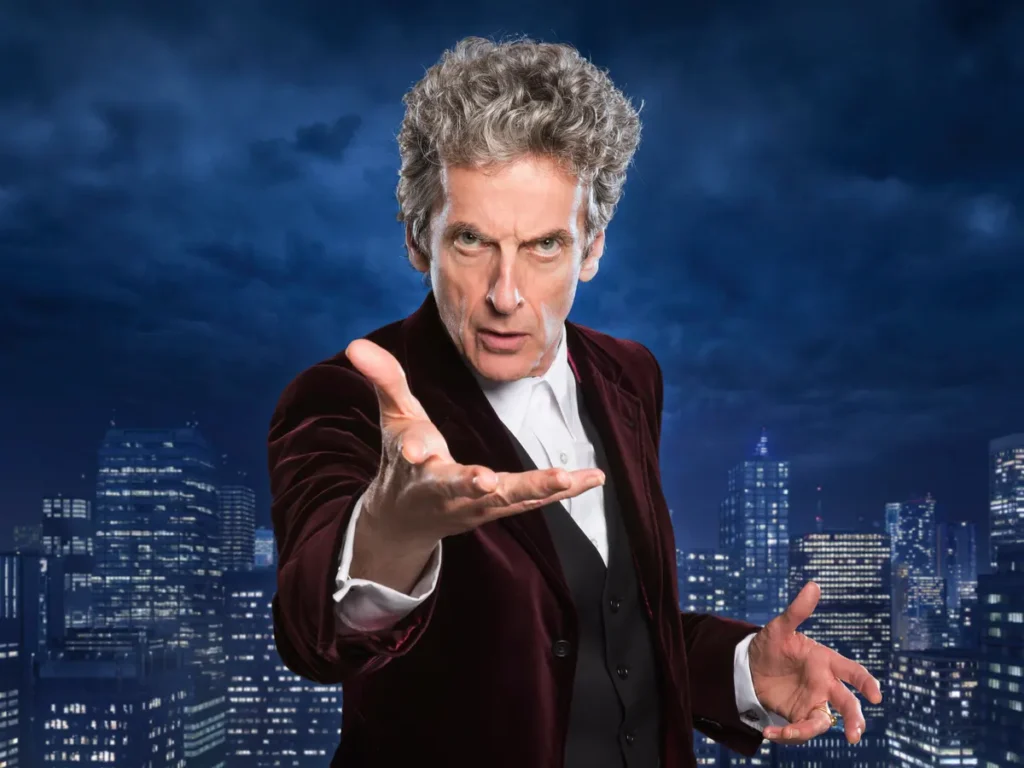
In 2013, the TARDIS underwent another transformation, and Peter Capaldi took on the mantle of the Twelfth Doctor, introducing viewers to a Time Lord marked by gruff exterior, profound wisdom, and a penchant for sonic shades. Capaldi’s portrayal brought a more mature and contemplative dimension to the iconic character, navigating themes of identity, morality, and the consequences of one’s actions.
Dressed in a dark, tailored ensemble, Capaldi’s Doctor projected a no-nonsense demeanor, embodying a sense of authority and a willingness to confront uncomfortable truths. The Twelfth Doctor’s sternness was complemented by moments of vulnerability, highlighting a character grappling with the weight of his own history and choices.
Capaldi’s Doctor engaged in morally complex story arcs, such as the exploration of the mysterious hybrid in “The Magician’s Apprentice/The Witch’s Familiar” and the profound introspection of “Heaven Sent.” The character’s relationships with companions like Clara Oswald and Bill Potts provided emotional depth, exploring themes of friendship, loss, and the transient nature of existence.
The Twelfth Doctor’s era was characterized by a fusion of darkness and humor, with Capaldi delivering memorable monologues and moments of profound reflection. Notable episodes like “Listen” and “World Enough and Time/The Doctor Falls” showcased the depth and complexity of the character, as well as Capaldi’s masterful performance.
As Peter Capaldi bid farewell to the TARDIS in 2017, he left behind a legacy of gruff wisdom and introspective storytelling, contributing to the ongoing evolution of Doctor Who. The Twelfth Doctor’s era stands as a poignant exploration of the complexities of the Time Lord, adding a layer of philosophical depth to the show’s enduring narrative.
Achievements: Explored themes of identity, morality, and consequences of actions.
Thirteenth Doctor (Jodie Whittaker):
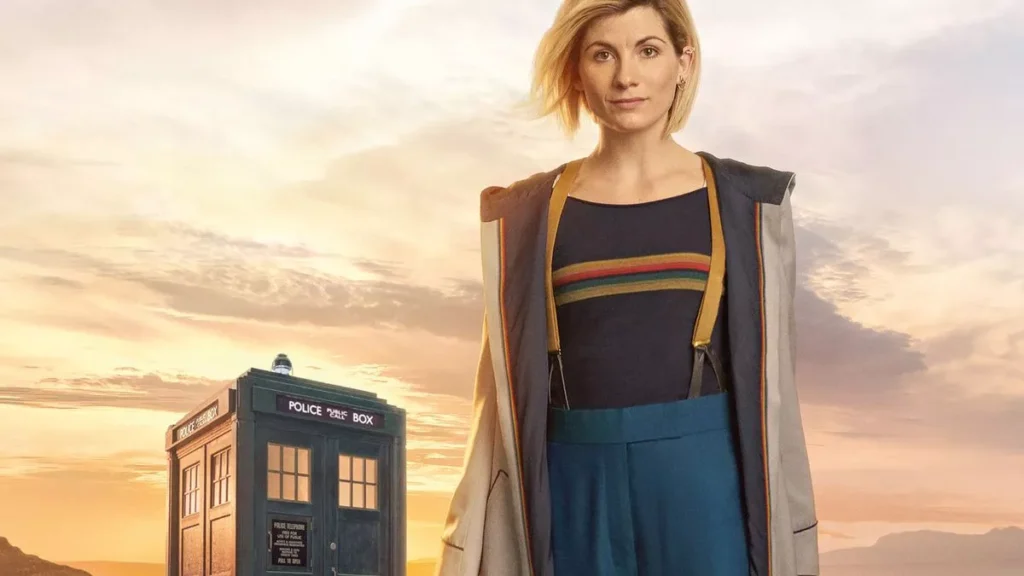
In 2017, the TARDIS doors swung open to reveal a groundbreaking era as Jodie Whittaker stepped into the role of the Thirteenth Doctor, breaking gender barriers and infusing the show with a radiant energy. Whittaker’s portrayal brought a fresh perspective to the iconic character, embodying a sense of optimism, compassion, and an unwavering belief in the power of change.
Dressed in a distinctive coat, rainbow-striped shirt, and sporting ear-piercing accessories, Whittaker’s Doctor showcased a vibrant and eclectic fashion sense that mirrored her exuberant personality. The Thirteenth Doctor’s catchphrase, “Oh, brilliant!” became synonymous with her boundless enthusiasm for discovery and adventure.
Whittaker’s Doctor embarked on a series of adventures with a diverse group of companions, including Ryan Sinclair, Yasmin Khan, and Graham O’Brien. The dynamics of the TARDIS crew reflected a sense of inclusivity, highlighting the importance of teamwork and friendship in facing the challenges of time and space.
The Thirteenth Doctor’s era embraced storytelling that addressed contemporary social issues while maintaining the show’s signature blend of science fiction and fantasy. Episodes such as “Rosa” and “Demons of the Punjab” delved into historical narratives with a focus on empathy and understanding.
Jodie Whittaker’s tenure marked a transformative phase for Doctor Who, not only as the first female Doctor but also for the positive energy and inclusivity she brought to the role. As the Thirteenth Doctor continues her journey, she stands as a symbol of change and possibility, reminding viewers that the spirit of the Doctor endures and evolves across time and regenerations.
Achievements: Broke gender norms as the first female Doctor, emphasized inclusivity.
Fourteenth Doctor (David Tennant):
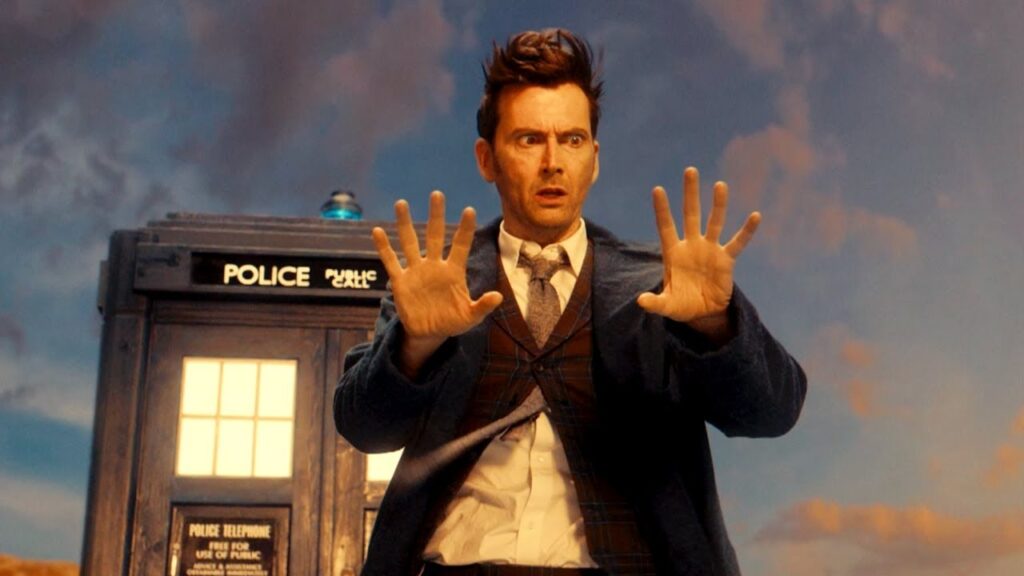
In a surprising twist in the series, David Tennant’s version of the Doctor returned after Jodie Whittaker’s version of the Doctor regenerated. Donna Noble returned as his companion in a 3 part Disney Special. Battling Alien invasions and the returning of The Celestial Toymaker by Neil Patrick Harris.
Fifteenth Doctor (Ncuti Gatwa):
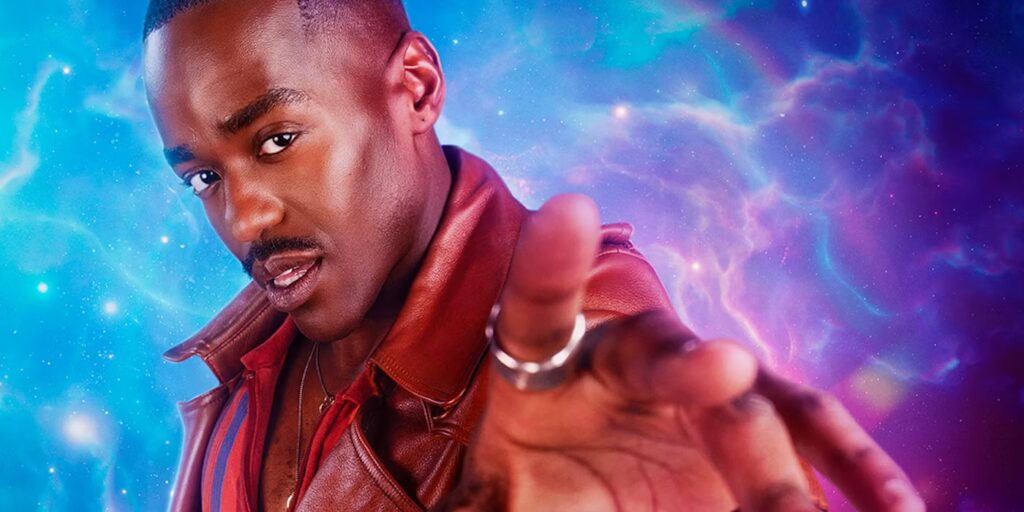
In an era where representation and inclusivity are at the forefront of discussions in the entertainment industry, Gatwa’s casting marks a significant step forward. The 15th Doctor is a symbol of the show’s commitment to embracing diversity and telling stories that reflect the rich tapestry of the human experience.
As we eagerly await the first glimpse of Ncuti Gatwa in the iconic Time Lord attire, one thing is certain – Doctor Who is about to embark on a thrilling new journey. Gatwa’s charisma, combined with the creative genius of the show’s writers and producers, ensures that the TARDIS will continue to be a vessel for imaginative storytelling, emotional depth, and, most importantly, the enduring message that, in the words of the Doctor, “We’re all stories in the end. Just make it a good one.”
Achievements: Broke diversity mold with being the first black and openly gay actor to take on the role.
The legacy of Doctor Who stands as a testament to the richness of these diverse characterizations. It’s not merely a show about time travel and alien encounters; it’s a narrative tapestry woven by the hands of each Doctor, contributing a unique thread to the overall story. The ability of the show to seamlessly transition from one Doctor to the next, with each actor bringing their own interpretation and charisma, showcases the versatility and timelessness of the Doctor’s character. The enduring appeal lies not just in the sci-fi elements, but in the humanity, humor, and complexity that each Doctor brings to the role. The show’s ability to adapt and grow while maintaining its core essence has ensured that Doctor Who remains a cultural phenomenon that continues to capture the imaginations of viewers around the world.


